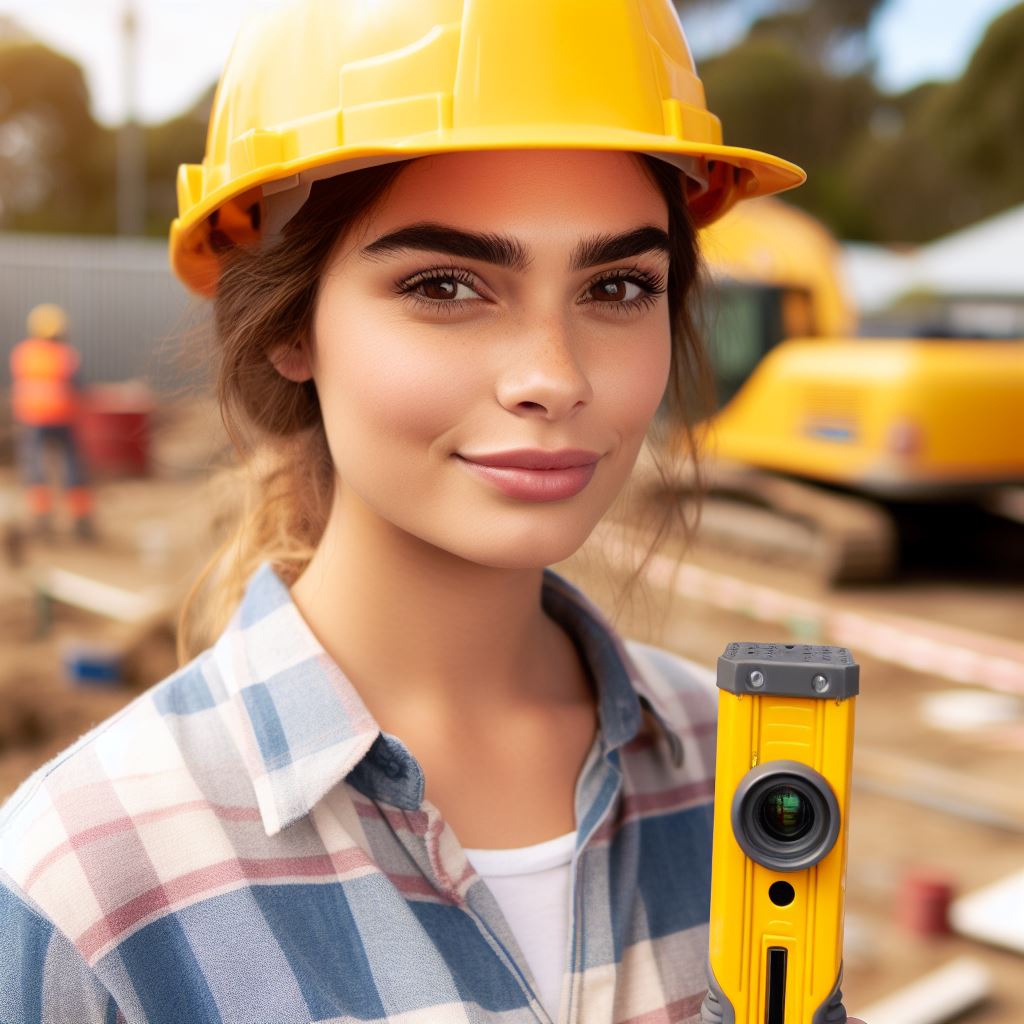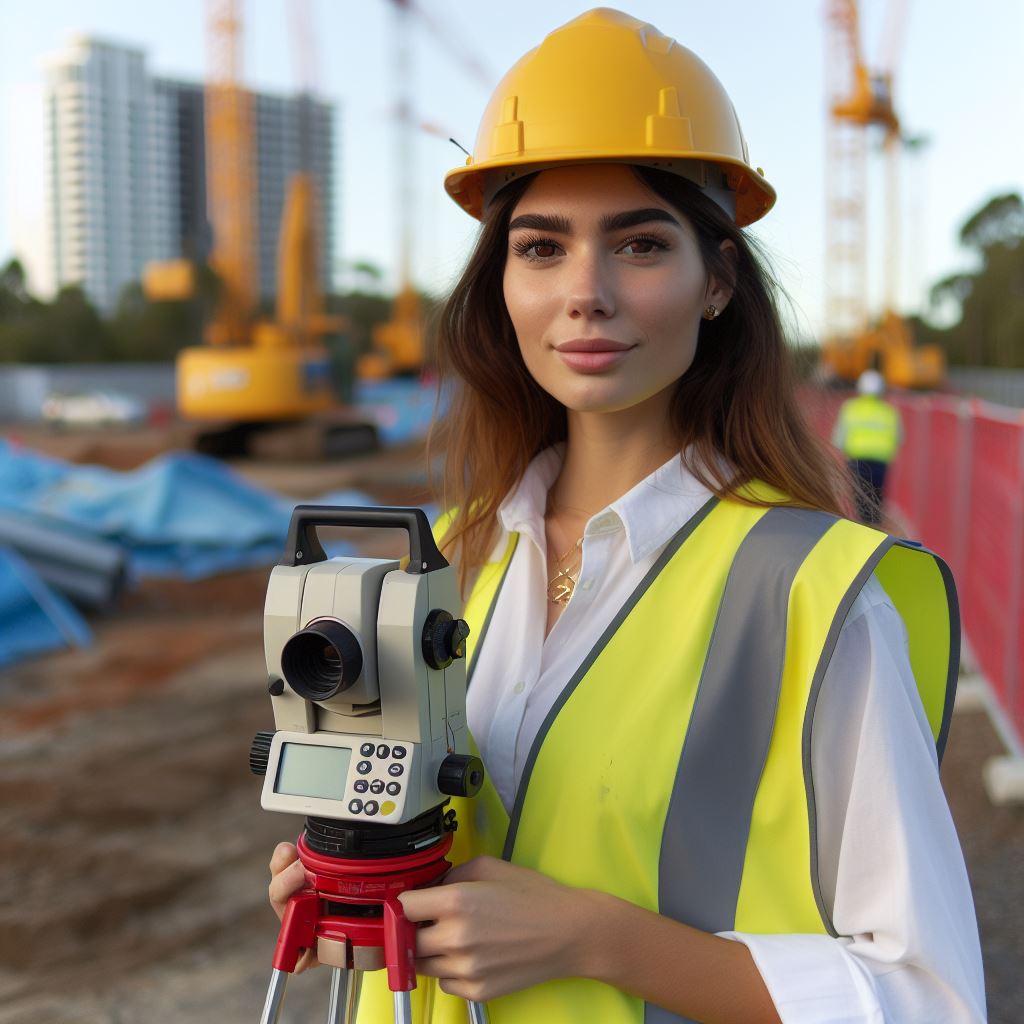Introduction
A. Surveying Tech in Australia
Australia’s surveying technology evolves rapidly, shaping diverse industries with precision and efficiency.
B. Crucial Role in Industries
Surveying, an unsung hero, underpins construction, agriculture, and environmental management, ensuring accurate spatial data.
C. Drones Revolutionize Surveying
Drones soar as game-changers, elevating surveying precision and speed. This tech marvel opens new vistas for Australia’s surveyors.
In a vast nation like Australia, surveying technology plays a pivotal role, revolutionizing industries and reshaping landscapes.
Whether it’s constructing urban marvels, managing vast agricultural tracts, or preserving the environment, surveying provides the indispensable foundation.
Enter drones, the high-tech sentinels transforming the surveying landscape. These aerial wonders zip through the skies, capturing data with unparalleled accuracy and speed.
As we delve into the realms of surveying tech in Australia, the journey unfolds with the symbiotic dance of tradition and innovation, where the importance of precision meets the prowess of cutting-edge technology.
History of Surveying in Australia
Australia has a rich history in surveying, with traditional techniques paving the way for technological advancements.
A. Overview of traditional surveying techniques
- Early surveyors in Australia relied on basic tools like compasses, chains, and theodolites.
- They would measure angles, distances, and heights to create accurate land surveys.
- The use of trigonometry and mathematical calculations was crucial in their surveying work.
- These traditional techniques required manual labor and extensive fieldwork.
- Surveyors faced challenges such as rough terrains, vast landscapes, and limited resources.
B. Evolution of surveying technology in the country
- With advancements in technology, surveying in Australia entered a new era.
- The introduction of electronic distance measurement (EDM) instruments revolutionized the field.
- EDM instruments allowed for more accurate and efficient measurements of distances between points.
- Aerial surveying techniques using airplanes and helicopters became prominent in the mid-20th century.
- Laser scanning and Global Navigation Satellite Systems (GNSS) further enhanced surveying capabilities.
C. Introduction of drones in surveying and its impact
The emergence of drones has brought about a significant transformation in the surveying industry.
- Drones, equipped with high-resolution cameras and LiDAR sensors, can capture detailed aerial imagery.
- They provide a cost-effective and time-efficient alternative to traditional surveying methods.
- Drones eliminate the need for extensive fieldwork, reducing risks and improving safety for surveyors.
- They allow for rapid data collection and processing, enabling quicker project turnaround times.
- Drones facilitate the creation of highly accurate 3D models and topographic maps.
- Surveyors can analyze and interpret the collected data with advanced software, enhancing decision-making.
- Using drones in surveying has expanded the possibilities of monitoring and assessing remote areas.
- Industries such as construction, agriculture, and environmental management have greatly benefited from drone surveys.
- The use of drones has also opened up new career opportunities in the field of surveying.
Therefore, the history of surveying in Australia highlights the evolution from traditional techniques to modern technology, with drones playing a pivotal role in reshaping the industry.
Surveyors can now leverage the capabilities of drones to enhance their work efficiency, accuracy, and safety.
As technology continues to advance, the future of surveying in Australia appears promising, with new tools and techniques on the horizon.
Benefits of Drones in Surveying
A. Increased accuracy and efficiency
Drones have revolutionized the surveying industry by providing increased accuracy and efficiency in gathering data.
With advanced sensors and imaging technology, drones can capture high-resolution images and collect precise measurements.
This eliminates the need for manual surveying, reducing human errors and improving overall accuracy.
B. Cost-effectiveness compared to traditional methods
Using drones for surveying can significantly reduce costs compared to traditional surveying methods.
Drones can cover large areas in a short time, eliminating the need for extensive manpower.
They also require minimal setup and can be easily deployed, making them a cost-effective solution.
C. Ability to access hard-to-reach or dangerous areas
Drones offer a unique advantage in accessing hard-to-reach or dangerous areas for surveying purposes.
They can navigate through rough terrains, dense vegetation, and hazardous locations with ease.
This eliminates the need for surveyors to physically access such areas, ensuring their safety and saving time and resources.
D. Examples of successful drone surveying projects in Australia
Australia has witnessed several successful drone surveying projects that highlight the benefits of using this technology.
In Melbourne, drones were employed to capture detailed aerial imagery of construction sites, enabling accurate progress monitoring and site analysis.
This improved project management and reduced delays.
Your Personalized Career Strategy
Unlock your potential with tailored career consulting. Get clear, actionable steps designed for your success. Start now!
Get StartedIn Queensland, drones were utilized to survey remote areas affected by natural disasters.
By capturing high-resolution imagery, these drones provided vital information for damage assessment and recovery planning.
This expedited the relief efforts and saved significant costs.
Another impressive example is the use of drones in the mining industry in Western Australia.
Drones equipped with LiDAR technology were employed to create accurate 3D models of mining sites.
This allowed efficient planning, monitoring, and resource allocation, resulting in improved productivity and cost savings.
These successful drone surveying projects in Australia demonstrate the immense potential of this technology in various industries.
The benefits of increased accuracy, cost-effectiveness, and accessibility make drones a valuable tool for surveying professionals.
Essentially, drones have brought numerous benefits to the surveying industry in Australia. They offer increased accuracy and efficiency in data collection, reducing human errors.
Drones are also cost-effective compared to traditional methods, saving time and resources. Their ability to access hard-to-reach or dangerous areas ensures the safety of surveyors.
Successful drone surveying projects in Australia demonstrate the practical applications and advantages of using drones in surveying.
As technology continues to advance, drones will undoubtedly play a pivotal role in shaping the future of surveying in Australia and beyond.
Read: Surveying 101: An Aussie’s Intro to the Field
Applications of Drones in Surveying
A. Construction industry and land development
Drones have become invaluable tools in the construction industry and land development projects.
With their aerial capabilities and high-resolution cameras, drones offer efficient and accurate surveying solutions.
These unmanned aerial vehicles (UAVs) can capture detailed images and videos of construction sites, providing real-time data to project managers and developers.
They can be used for site inspections, mapping, and monitoring progress from start to finish.
Drones help in identifying potential issues or errors before they become costly problems. They can easily detect discrepancies in design plans, such as incorrect measurements or alignments.
This allows for immediate corrections, reducing rework and ensuring the quality of the final product.
Furthermore, drones are essential for land development projects. They can survey large areas and gather precise topographic data, including elevation, contours, and boundaries.
This information is crucial for planning and designing infrastructure, roads, and buildings.
B. Environmental monitoring and conservation areas
Drones are revolutionizing environmental monitoring and conservation efforts.
They facilitate the collection of vital data needed for managing and protecting natural resources.
Stand Out with a Resume That Gets Results
Your career is worth more than a generic template. Let us craft a resume and cover letter that showcase your unique strengths and help you secure that dream job.
Get HiredIn remote and inaccessible areas, drones can be used to monitor wildlife habitats, including endangered species.
They can provide visual evidence of habitat destruction, illegal activities, or changes in vegetation.
This data helps conservationists and authorities make informed decisions regarding protection measures.
Moreover, drones offer an efficient way to monitor water bodies, such as rivers, lakes, and oceans.
They can capture aerial images and videos, allowing scientists to assess water quality, detect pollution sources, and track changes over time.
The use of drones in environmental monitoring reduces the need for human intervention in fragile ecosystems.
They can cover large areas in a short time, providing valuable information without disturbing wildlife or damaging natural habitats.
C. Agriculture and crop management
Drones have transformed the agricultural sector, improving crop management practices and increasing productivity.
They enable farmers to monitor and assess their fields with precision.
Equipped with specialized sensors and cameras, drones can capture multispectral and infrared imagery.
These images can detect variations in crop health, identifying areas of nutrient deficiency or pest infestation.
Farmers can then take timely actions to optimize their farming practices, such as adjusting irrigation or applying targeted treatments.
Drones also assist in crop yield estimation. By analyzing crop health data, farmers can predict yields and plan accordingly for harvesting and storage. This helps optimize logistics and reduce post-harvest losses.
Additionally, drones facilitate the use of precision agriculture techniques. They can precisely distribute fertilizers, pesticides, or other crop inputs based on real-time data.
Transform Your LinkedIn for Maximum Impact
Elevate your professional brand with a LinkedIn profile that attracts recruiters, showcases your expertise, and maximizes opportunities. Stand out in your industry with a profile built for success.
Boost ProfileThis targeted approach minimizes costs, reduces environmental impacts, and improves overall crop performance.
D. Mining and resource exploration
Drones are increasingly utilized in the mining industry for resource exploration, mine planning, and monitoring operations.
They offer cost-effective and efficient solutions for collecting crucial data in hazardous environments.
Aerial surveys using drones provide accurate topographic information for mine planning and design.
They can create detailed 3D models of the terrain, helping engineers optimize extraction methods and assess potential risks.
Drones also play a vital role in monitoring ongoing mining operations. They can inspect mine sites, assess slopes and stability, and identify areas prone to erosion or landslides.
This information aids in ensuring the safety of workers and minimizing environmental impacts.
Furthermore, drones assist in monitoring and managing stockpiles of extracted minerals or waste materials.
They provide accurate volume calculations and help detect any irregularities or discrepancies, preventing inventory losses or theft.
E. Urban planning and infrastructure development
Drones have become valuable tools for urban planning and infrastructure development.
They offer fast and accurate data collection, providing crucial information for designing and managing cities.
By capturing high-resolution images and videos, drones can create detailed 3D maps of urban areas.
This data assists urban planners in analyzing existing infrastructure, identifying areas of congestion, and optimizing transportation networks.
Moreover, drones enable the regular inspection and maintenance of bridges, roads, and other infrastructure.
They can quickly assess structural integrity, detect damages or deterioration, and prioritize repair or maintenance work.
Drones also contribute to disaster management and emergency response.
In the event of natural disasters or accidents, drones can assess damages, search for survivors, and provide real-time situational awareness to emergency teams.
All in all, drones have numerous applications in surveying across various industries.
From construction and land development to environmental monitoring and agriculture, drones offer efficient and accurate solutions.
They revolutionize data collection, analysis, and planning in fields that heavily rely on accurate spatial information.
Read: Historic Preservation in Australian Architecture

Challenges and Limitations of Drone Surveying
A. Regulatory issues and legal restrictions
1. Drone surveying is subject to strict regulations and legal restrictions imposed by aviation authorities.
2. Obtaining necessary permits and certifications can be time-consuming and expensive for drone operators.
3. Operators must comply with airspace limitations, flight altitude restrictions, and no-fly zones.
B. Safety and security concerns
1. Drones can pose a risk to manned aircraft, especially if they fail or operate outside designated areas.
2. Unauthorized access to drone data can compromise privacy, security, and potentially be used for illegal activities.
3. The risk of technical issues such as engine failure or loss of control can lead to accidents and property damage.
C. Skill requirements and training for drone operators
1. Drone operators need to possess the necessary skills to safely and effectively operate the technology.
2. Knowledge of flight regulations, navigation, maintenance, and emergency procedures are essential.
3. Continuous training and staying updated with technological advancements are crucial for competent drone operation.
D. Limitations in data quality and interpretation
1. Drone surveying may have limitations in capturing accurate and precise data for certain applications.
2. Weather conditions, limited flight time, and restricted payload capacities can affect data collection.
3. Data processing and interpretation skills are required to derive meaningful insights from the collected drone data.
In review, while drone surveying offers numerous benefits for various industries, there are several challenges and limitations that need to be addressed.
Regulatory issues and legal restrictions impose obstacles to the seamless integration of drones into surveying practices.
Safety and security concerns require stringent measures to ensure the responsible and ethical use of drone technology.
Skill requirements and ongoing training are fundamental for drone operators to navigate the complexities of operations.
Finally, limitations in data quality and interpretation emphasize the need for continuous improvement and innovation in drone surveying methodologies.
Despite these challenges, advancements in technology and collaborative efforts among stakeholders can overcome these limitations and unlock the full potential of drone surveying in Australia.
Read: Challenges Faced by Modern Architects
You Might Also Like: Drafting Internships: Stepping Stone in Aus
Gain More Insights: Building Codes in Australia: A Drafter’s Guide
Future of Drone Surveying in Australia
Australia is at the forefront of adopting innovative technologies in surveying, and the future of drone surveying in the country looks promising.
Potential drone tech advancements, coupled with AI and ML integration, industry collaboration, and regulatory support, forecast a revolutionary impact on Australia’s surveying sector.
A. Potential advancements and improvements in drone technology
- Improvements in battery life and power efficiency of drones will prolong flight times and data collection capabilities.
- Advancements in sensor technology will enhance the accuracy and resolution of data obtained through drone surveys.
- Integration of LiDAR technology in drones will enable 3D mapping and modeling with higher precision.
- Miniaturization of equipment will make drones more compact, portable, and agile for surveying in challenging terrains.
- Development of autonomous drones with obstacle detection and avoidance capabilities will enhance safety and efficiency.
B. Integration of artificial intelligence and machine learning in surveying
- AI algorithms can automate data analysis, pattern recognition, and anomaly detection, reducing the need for manual processing.
- Machine learning algorithms can improve data interpretation, enabling more accurate identification of objects and features in survey data.
- Real-time data analytics using AI can provide instant insights and decision-making support during survey operations.
- AI-powered predictive modeling can assist in identifying potential risks and optimizing survey strategies.
C. Collaboration between industry stakeholders and regulatory bodies
- Close collaboration between drone manufacturers, surveyors, and data analysts will drive innovation and improve surveying practices.
- Regulatory bodies need to actively engage with industry stakeholders to develop guidelines and standards for safe and ethical drone surveying.
- Establishment of certification programs and licensing requirements will ensure competent and responsible drone surveying professionals.
- Regular knowledge exchange platforms and industry conferences will foster collaboration, knowledge sharing, and best practices.
D. Forecasted growth and impact on various sectors
- The construction industry will benefit from faster, safer, and more accurate site inspections, project monitoring, and progress reporting.
- Agriculture will experience improved crop management, yield estimation, and precision farming through aerial monitoring and analysis.
- Environmental monitoring and conservation efforts will be enhanced with drones providing real-time data on ecosystems and biodiversity.
- Infrastructure planning and maintenance will become more efficient, cost-effective, and proactive with drone-based inspections and asset management.
- Emergency response and disaster management will leverage drones for rapid assessments, search and rescue operations, and damage assessments.
- The mining and resources sector will benefit from drone surveys for exploration, monitoring of mining sites, and environmental impact assessments.
In short, the future of drone surveying in Australia holds immense potential.
Drone technology advances, artificial intelligence and machine learning integration, industry-stakeholder collaboration, and projected growth will reshape Australia’s surveying industry.
Embracing these advancements and fostering collaboration will enable Australia to stay at the forefront of the drone surveying revolution.
Read: Architecture Licensing in Australia Explained
Conclusion
Concluding our discussion, the integration of drone surveying in Australia presents a myriad of advantages, foremost among them being the substantial enhancement of both efficiency and safety in surveying practices.
This technological evolution underscores the pivotal need for surveying professionals to actively embrace and incorporate such advancements into their skill sets and methodologies.
Embracing drones is not merely a choice but a necessity for maintaining competitiveness in the ever-evolving field of surveying.
Moreover, the call for further research and widespread adoption of drone technology in the country holds the potential to usher in transformative improvements in surveying practices.
The continuous exploration and integration of advanced drone capabilities can contribute to refining data collection, analysis, and interpretation processes.
This, in turn, can lead to more accurate and comprehensive survey results.
In closing, the trajectory of surveying in Australia is intricately tied to the adept incorporation of drone technology.
Professionals drive innovation, expanding possibilities. Ongoing research transforms surveying, elevating professional standards for positive, significant changes.




